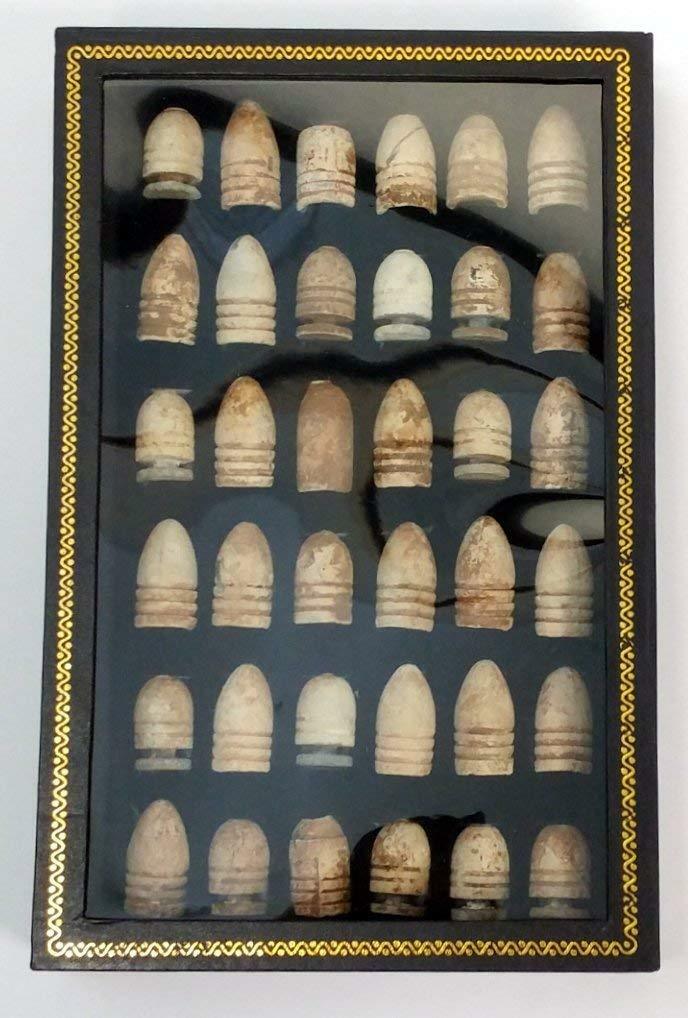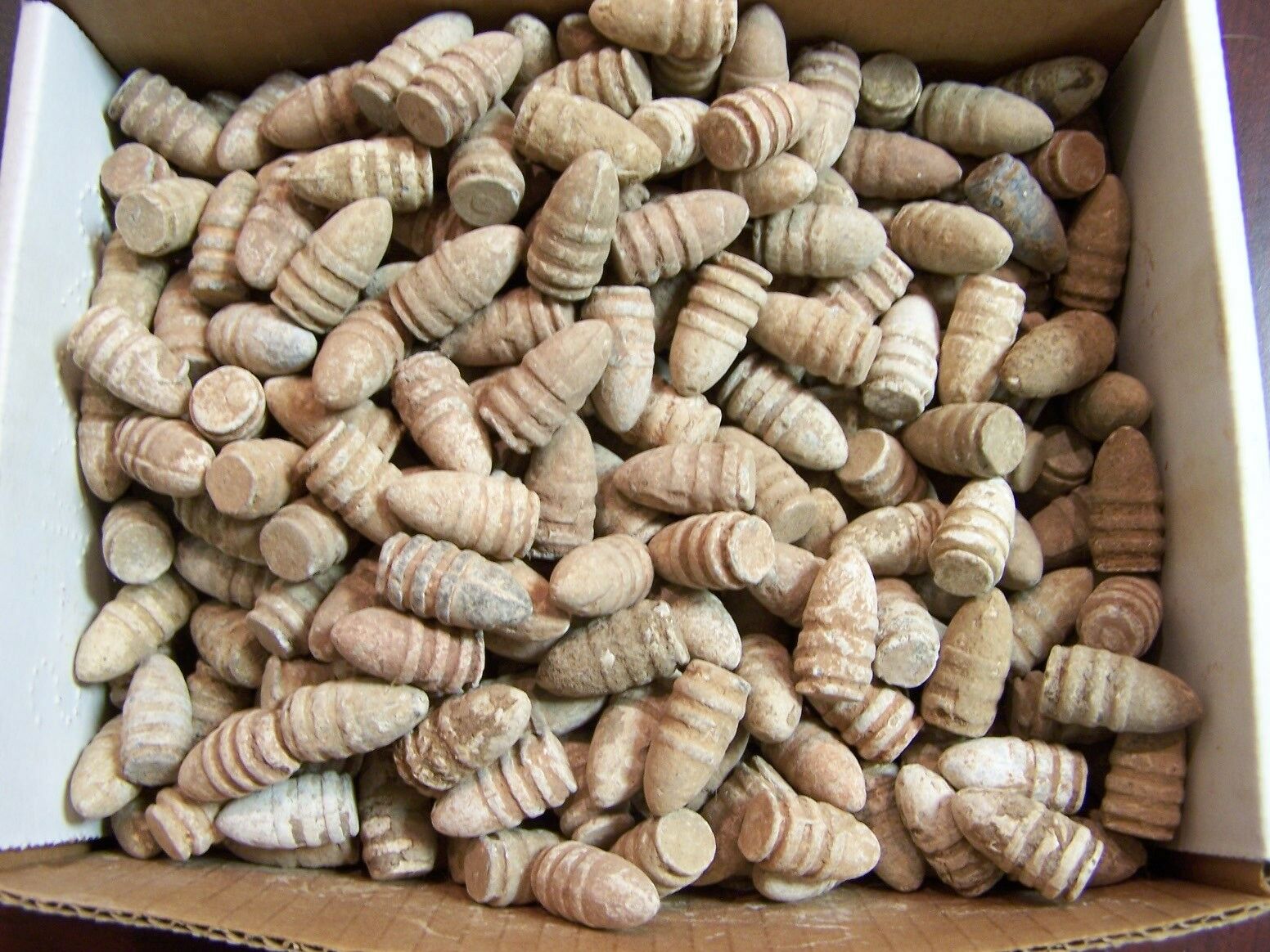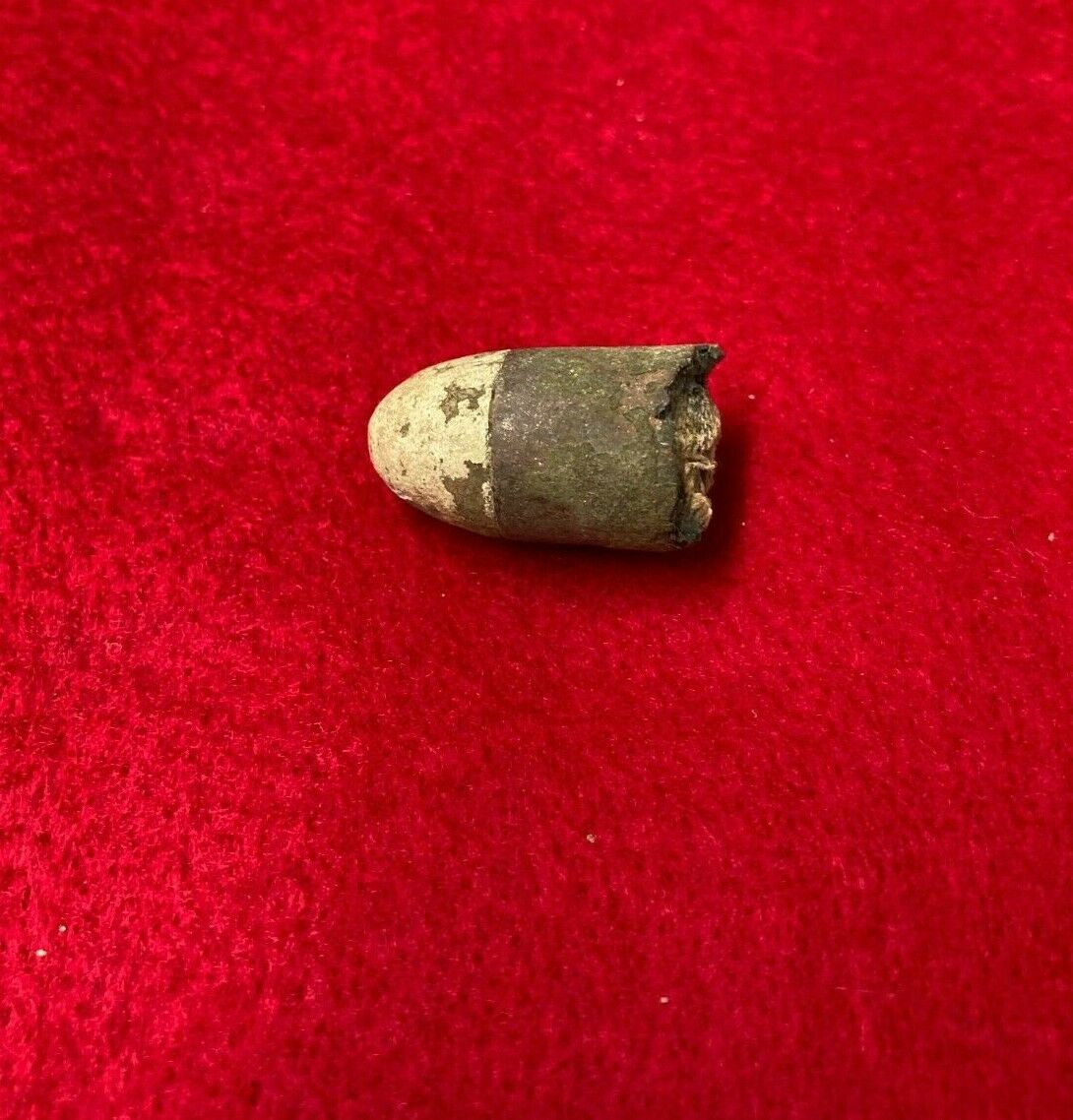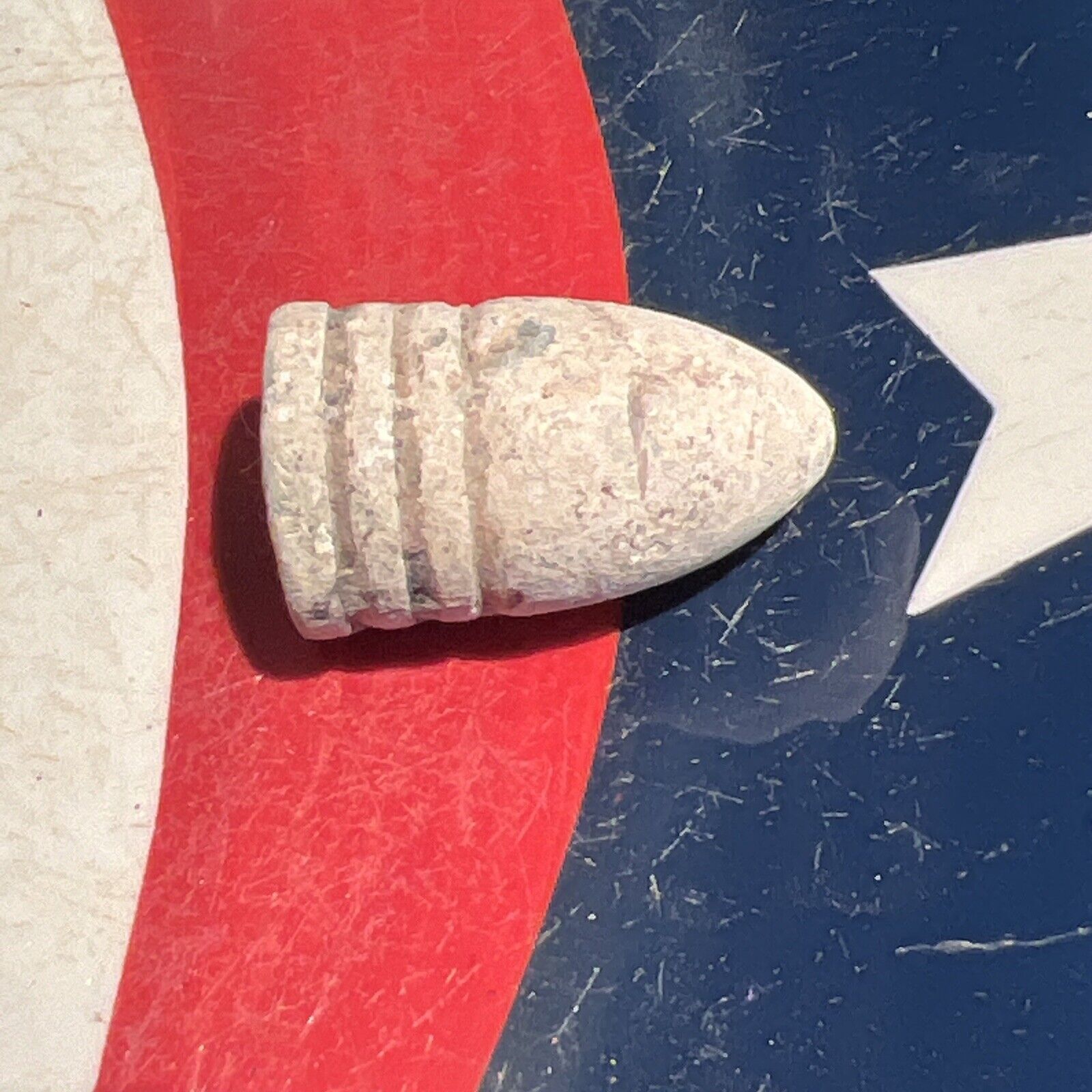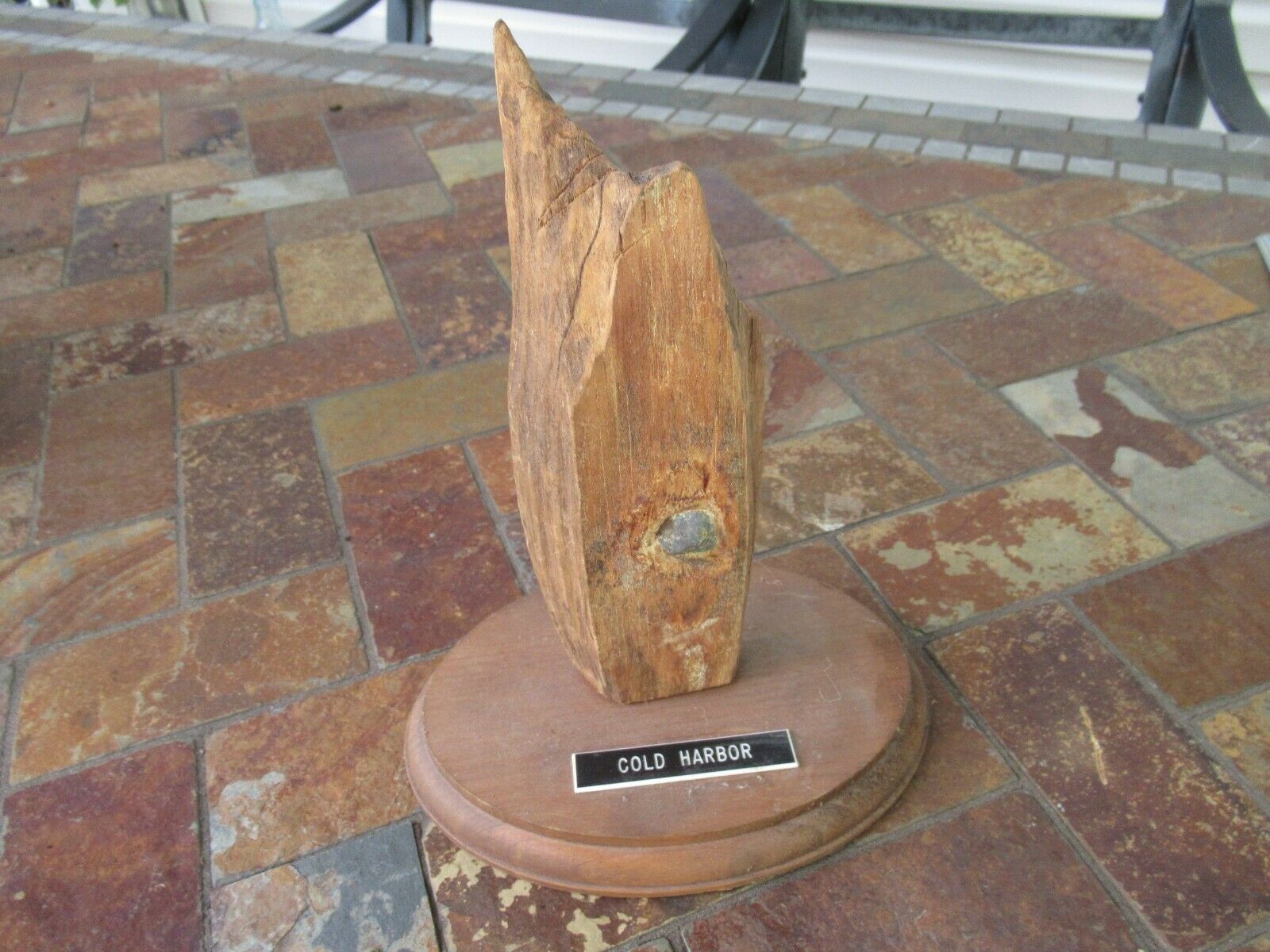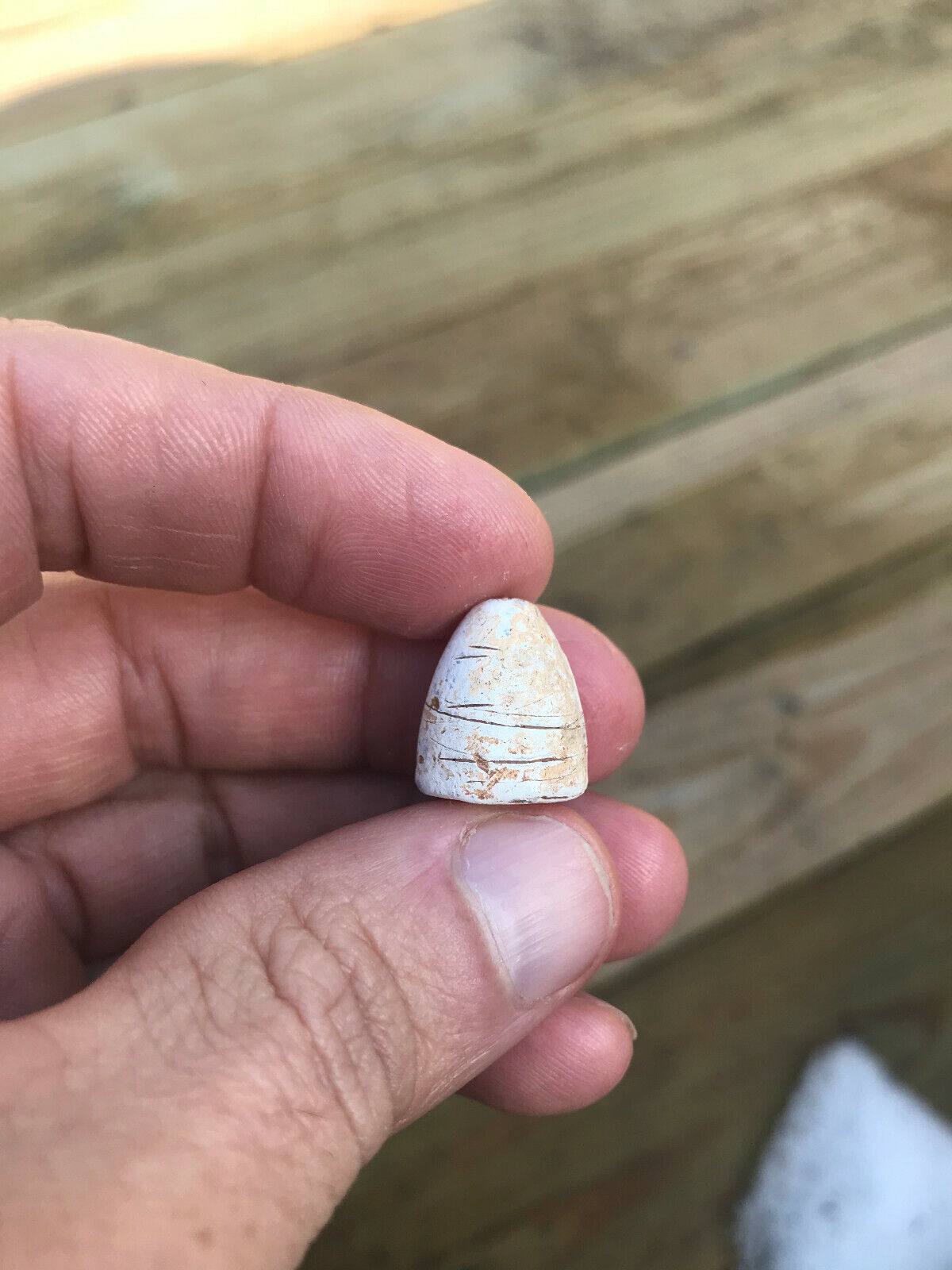-40%
Battle of Shepherdstown WV Blackford's/Boteler's Ford Civil War Relic 58 Bullet
$ 13.19
- Description
- Size Guide
Description
We are working as partners in conjunction with Gettysburg Relics to offer some very nice American Civil War relics for sale.The owner of Gettysburg Relics was the proprietor of Artifact at 777 on Cemetery Hill in Gettysburg for a number of years, and we are now selling exclusively on eBay.
ANTIETAM CAMPAIGN / THE BATTLE OF SHEPHERDSTOWN / AKA THE BATTLE OF BLACKFORD'S FORD (THE BATTLE OF BOTELER'S FORD - WENTWORTH MILITARY ACADEMY COLLECTION - A very nice dropped .58 Caliber 3-Ring Bullet - found in October 1959
A very nice relic condition dropped
.58 Caliber 3-Ring Bullet,
that was recovered at the site of the Battle of Blackford's Ford (also known as the Battle of Shepherdstown or the Battle of Boteler's Ford) in October 1959.
It originally came from the Wentworth Military Academy Collection. A large collection of dug relics, most with labels or in boxes indicating their recovery location and
date (apparently put there by the unknown digger), which was originally held by the academy (located in Missouri), was sold at auction in the summer of 2008.
A letter of provenance will be included.
This battle was an intense affair that was fought as Lee's Army tried to cross the Potomac River after the Battle of Antietam.
Boteler’s Ford
'Located about a mile downstream from Shepherdstown, West Virginia, Boteler’s Ford is also known as Blackford’s Ford and Pack Horse Ford. It is the only good crossing for several miles in each directon and was in use since the earliest recorded history. The ford is rocky with scattered large boulders, and under normal river conditions is hip deep.
Several historical markers are at the ford.
Thomas Swearingen began operating a ferry in 1755 at Shepherdstown at the site of the current James Rumsey Bridge. In 1849 the ferry was replaced by a bridge, whose stone pillars still stand just downsteam of the modern bridge. Confederate Colonel Thomas Jackson, the future “Stonewall,” was ordered to burn the bridge in June of 1861, and Boteler’s Ford resumed being the major crossing point in the area.
In August of 1861 Confederate cavalry picketing the southern bank of the river would gather at a large mill at the ford to shoot at Union pickets across the river. On August 18 men from Companies E and H of the 13th Massachusetts Infantry crossed the ford and burned the mill to deny its cover to the sharpshooters.
Major crossings:
Stonewall Jackson’s command crossed from Virginia into Maryland on the way to join Lee at Sharpsburg prior to the battle of Antietam in September of 1862.
After the Battle of Antietam on September 17, 1862, Robert E. Lee pulled his army back to Virginia across the ford during the night of September 18-19. Union forces followed, leading to the Battle of Shepherdstown, the bloodiest battle in what is now West Virginia. Union forces who crossed the ford in pursuit of Lee’s withdrawing army captured several artily pieces, but were forced back across the river by a counterattack launched by A.P. Hill’s Division of Confederates. Although most Union regiments pulled back across the river without incident the 118th Pennsylvania Infantry was the last to cross and suffered heavily.
During the Gettysburg campaign in 1863 Major General Edward Johnson’s Confederate Division crossed the river heading to Maryland on the 18th of June, followed by Major General Jubal Early’s Division on June 22nd.
In July of 1864 Union Major General Franz Siegel retreated north across the ford on his withdrawal to Maryland Heights pursued by Confederate Major General John B. Gordon’s division.
In August of 1864 Early again crossed the ford, now commanding an army on its way to Washington D.C.'
All of the collections that we are offering for sale are guaranteed to be authentic and are either older recoveries, found before the 1960s when it was still legal to metal detect battlefields, or were recovered on private property with permission. Some land on Battlefields that are now Federally owned, or owned by the Trust, were acquired after the items were recovered. We will not sell any items that were recovered illegally, nor will we sell any items that we suspect were recovered illegally.
Thank you for viewing!











